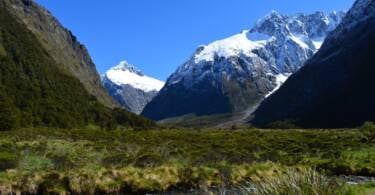Many people hadn’t heard of Soweto until the recent death of Nelson Mandela. I hadn’t until I visited last year.
Many people hadn’t heard of Soweto until the recent death of Nelson Mandela. I hadn’t until I visited last year. Those who have usually associate it with one of three things—the FNB stadium (“Soccer City”), the iconic Soweto towers, or, sadly, extreme poverty.
Yes, I saw all of those things, but I saw so much more to Soweto—a vibrant township whose residents could teach most of the developed world a thing or two about life.
Vilakazi Street
One of the most famous streets worldwide, not just because of its past residents (Nelson Mandela and Desmond Tutu), Vilakazi Street was the site of the 1976 Hector Pieterson shooting.
It’s easy to say it’s a typical street, but there’s no such thing in a township where thousands of people drive over modern flyovers and dual carriageways every day, whilst shanty towns spread out for miles on end below them.
Our day in Soweto began with lunch. Directly opposite the restaurant, next to some houses which wouldn’t have looked out of place in British suburbia, was a wall covered in graffiti. I forget now what the graffiti alluded to, but I do remember it being more meaningful; art with a message.
We travelled past the spot where Hector Pieterson was shot, to the house in which Mandela used to live, now converted to a museum and not at all faithful to Mandela’s time there.
We passed a roadside stall manned by an African Zulu Warrior, in full traditional dress, his wares comprising of hand-painted tea towels and wooden carvings. He was raising money for his 6-week-old daughter who was born with cracked ribs.
Despite his understandable distress in sharing his story with a bunch of well-off tourists, he took great pleasure in asking about our trip and what we thought of Soweto, the town of which he was proud.
The shanty towns
Our tour guide, Soweto born and bred himself, insisted on showing us the real Soweto. So we found ourselves looking down over a shanty town. It stretched far into the distance, continuing close to railway lines, and up into the hills, all the while watched over by the iconic Soweto towers.
Looking directly below, we saw into the lives of real people—children playing, women hanging washing on a makeshift line, people putting their lives at risk crossing the lethal railway tracks. If anyone had ever doubted the reality of the scenes shown on Oxfam appeal adverts, this alone was proof that they were not.
An elderly woman and her granddaughter approached us, telling us they lived in one of the homes below. The genuine interest they showed in our lives was humbling. We were then faced with a wall of children, around 15 of them, all keen to talk to us.
Shouting below alerted us to the arrival of more children and groups were soon scrambling up the grass bank and climbing over the railings to see us.
Sadly, their interest stemmed from their need to beg – we were later told that their families send them up to the road to get food or money from tourists.
The minibus driver spoke to the children in a language we didn’t understand. He later told us he had explained to them that those who had not been lucky enough to receive food or money from visitors today would have to hope that tomorrow was a better day for them.
We had been told time and time again that giving these children hand outs did nothing to help them, as it teaches them that begging is a sustainable way of life. An overwhelming sense of guilt hit us knowing that these children would have to go back to their parents, and tell them that they had not managed to get any money today.
A home
We then drove to another area of Soweto where we toured of one of the settlements with a resident. We were blown away by the friendliness of the people. As we walked down the dirt track past their houses – some of them smaller than our bedrooms at home, they waved, smiled and welcomed us to their township.
One elderly lady even invited us into her house, insisting that we come in and look around. Our local guide, Sam, said that it was an honour for her to be able to show us her home – a matter of pride.
It consisted of three tiny rooms. Decor was non-existent. The walls were lined with tarpaulin in an attempt at insulation. It was small, but she was proud of it, chattering away, enquiring about where our lives, telling us about hers, laughing and smiling the whole time.
Yet the thing that stuck with me most about the experience was the attitude of the people we met. They all had next to nothing, lived in conditions that most people are lucky enough never to encounter, and have to fight just to survive every day, yet they were some of the most joyful and welcoming people I have ever met. Always laughing, smiling, greeting strangers and inviting them in to their homes.
There’s a lesson to be learned from these people.
Have you been to Soweto? Tell us about your experience in the comments section below.
Image: Laura Reynolds








